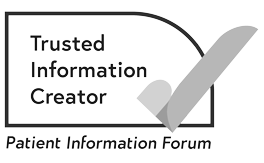Parenteral nutrition (feeding through a vein) and cancer
Parenteral nutrition (PN) means giving nutrients and fluid into the bloodstream through a tube.
About parenteral nutrition (PN)
Parenteral nutrition (PN) means having nutrients and fluid directly into the bloodstream. It is a type of tube feeding for nutrition support.
It is usually used when a person cannot take nutrients in through their digestive system. For example, this may be because:
- they had surgery on the small bowel and the gut needs to rest
- the gut is not working
- there is a blockage in the bowel (bowel obstruction)
- it is difficult to insert the tubes used for enteral nutrition (EN). This may happen after some types of surgery to the head and neck or surgery to the stomach.
PN is sometimes called TPN, which means total parenteral nutrition. But it is not always possible to provide total nutrition through the bloodstream.
How PN is given
PN is usually given through a thin tube. A healthcare professional inserts it into a large vein in the neck or chest. The tube is called a central line. Sometimes you have it through a thin tube inserted into a vein in the arm that goes up into a larger vein in the chest. This is called a PICC line (peripherally inserted central catheter).
Parenteral nutrition
Sometimes, a smaller vein in the arm is used, but this is less common. It may be used if you only need feeding for a short time, usually less than 10 days. It is also only possible if the amount of fluid you can have is not restricted. This is because PN needs to be more dilute if an arm vein is used. The doctors will decide the best type of feeding for you.
PN is usually started slowly. Your feed will be reduced over a few days when you no longer need it.
You usually have PN in hospital, but it may sometimes be possible to have it at home.
Benefits of PN
PN can give you nutrition even when the digestive tract is not working. It can allow the digestive tract to rest so that it can heal – for example, after surgery to the stomach or bowel. You may also have PN if you have severe vomiting, diarrhoea or a sore mouth, and cannot have enteral feeding.
Possible problems with PN
Rarely, an infection may develop either inside the line or where it comes out (the exit site). You should tell your doctor if:
- the skin around the exit site becomes red or darker, depending on your skin type
- the surrounding area becomes swollen or sore
- you notice fluid coming from the exit site
- you develop a high temperature (fever) or feel unwell.
You may be given antibiotics. If the infection is serious, the tube may need to be removed.
It is possible for a blood clot (thrombosis) to form at the tip of the central line. If this happens, the tube may have to be removed. You may be given some anti-clotting medicines to stop this from happening. These are usually added to the feed.
You will have regular blood tests while having PN. This is to check your levels of sugar, minerals and other substances. Your dietitian will plan the feed you have. Some people may need to have their feed specially prepared for them, taking into account any specific nutritional needs.
About our information
This information has been written, revised and edited by Macmillan Cancer Support’s Cancer Information Development team. It has been reviewed by expert medical and health professionals and people living with cancer.
-
References
Below is a sample of the sources used in our information about nutritional support. If you would like more information about the sources we use, please contact us at informationproductionteam@macmillan.org.uk
National Institute for Health and Care Excellence NICE. Nutrition support for adults: oral nutrition support, enteral tube feeding and parenteral nutrition. Clinical guideline CG32. Last updated: 04 August 2017 Available from www.nice.org.uk/guidance/cg32 [accessed July 2025]
British Association for Parenteral and Enteral Nutrition BAPEN. Nutrition Support. Available from www.bapen.org.uk/education/nutrition-support [accessed July 2025]
British Dietetic Association BDA. The Use of Blended Diet with Enteral Feeding Tubes. Available from www.bda.uk.com/resource-report/the-use-of-blended-diet-with-enteral-feeding-tubes.html [accessed July 2025]
British Specialist Nutrition Association Ltd BSNA. Parenteral Nutrition. Available from bsna.co.uk/pages/about-specialist-nutrition/parenteral-nutrition [accessed July 2025]
European Society for Clinical Nutrition and Metabolism. ESPEN. Muscaritoli M, Arends J et al. ESPEN practical guideline: Clinical Nutrition in Cancer. Clinical Nutrition 40 (2021). 2898-2913. Available from www.espen.org/files/ESPEN-Guidelines/ESPEN-practical-guideline-clinical-nutrition-in-cancer.pdf [accessed July 2025]
Date reviewed

Our cancer information meets the PIF TICK quality mark.
This means it is easy to use, up-to-date and based on the latest evidence. Learn more about how we produce our information.
The language we use
We want everyone affected by cancer to feel our information is written for them.
We want our information to be as clear as possible. To do this, we try to:
- use plain English
- explain medical words
- use short sentences
- use illustrations to explain text
- structure the information clearly
- make sure important points are clear.
We use gender-inclusive language and talk to our readers as ‘you’ so that everyone feels included. Where clinically necessary we use the terms ‘men’ and ‘women’ or ‘male’ and ‘female’. For example, we do so when talking about parts of the body or mentioning statistics or research about who is affected.
You can read more about how we produce our information here.




